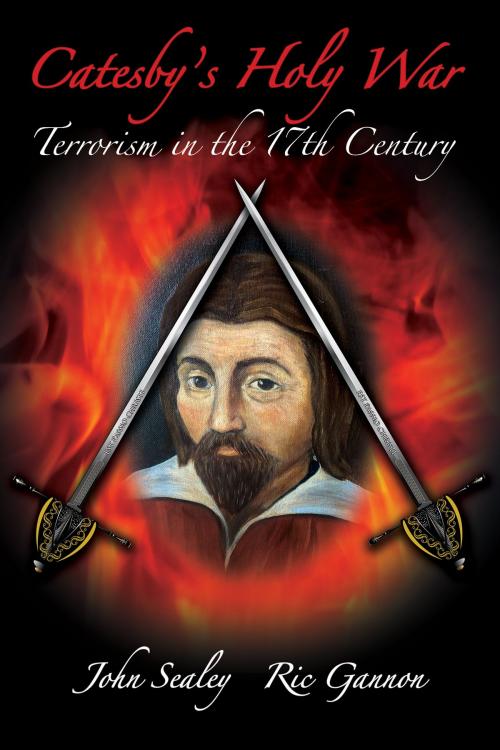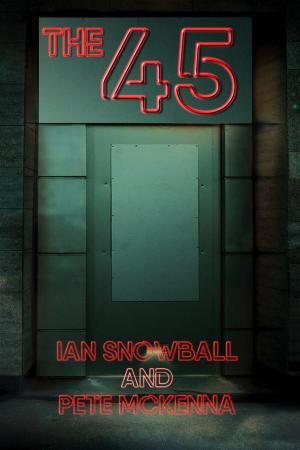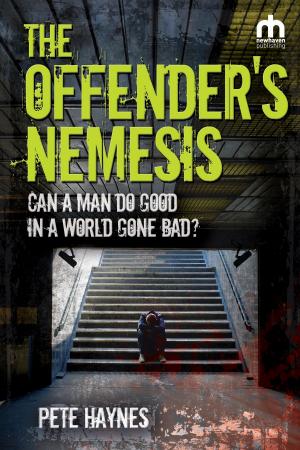| Author: | John Sealey, Ric Gannon | ISBN: | 9781910705599 |
| Publisher: | New Haven Publishing Ltd | Publication: | November 5, 2016 |
| Imprint: | Smashwords Edition | Language: | English |
| Author: | John Sealey, Ric Gannon |
| ISBN: | 9781910705599 |
| Publisher: | New Haven Publishing Ltd |
| Publication: | November 5, 2016 |
| Imprint: | Smashwords Edition |
| Language: | English |
Terrorism is not new for it has been around since the beginning of recorded history. Terrorism has been described variously as a tactic, a strategy, a crime, a holy duty.
One autumn morning, a group of dedicated terrorists set in motion an earth-shattering strike against the very foundations of the most powerful nation in the world. They were aiming, at a stroke, to wipe out the seat of government as well as the executive and lawmakers, thereby creating a vacuum from which their new world order would emerge.
The battle between the forces of the establishment against those seeking change by violent means is a timeless one, which still reverberates around the world today. History tells us that change is inevitable, and the failure of the plot, which was uncovered shortly before it was destined to wipe out King James, and all the nobles assembled for the opening of Parliament on November 5th 1605, is still celebrated today with bonfires and fireworks.
The book relates the story in a dramatized form bringing the characters to life involved in a plot conceived and implemented by a group of religious fanatics, led not by Guy Fawkes, as everyone seems to believe, but by Robert Catesby, a charismatic but wild young man from a privileged background, the Bin Laden of his time. Catesby had become embittered by an earlier brush with authority, and gradually became committed to extreme forms of violence to achieve his ends. Impressed by the force of his personality, a small group of malcontents were gradually drawn into the plot, who became equally dedicated to violence as a way forward. The group saw themselves as religious warriors in the forefront of a battle for religious supremacy, and for whom the slaughter of at least a thousand people in one explosive strike was a just cause. To that end they assembled over three tons of gunpowder packed into 36 barrels in a cellar under the House of Lords and were less than ten hours away from carrying out their deadly mission when the plot was foiled, thereby just averting a “ground zero” in London where research has shown the devastation would have spread over a three mile area.
Written around three principal historical characters, who between them displayed a polarised attitude to terrorism.
Catesby who provides the reader’s view of a terrorist mentality, illustrating the attitudes of those prepared to sacrifice themselves for a cause, and attempts to explain the atmosphere which started him on his fateful course of action.
King James represents the powers that be, embodying the principals of divine right and a firmness of conviction of Protestantism, which was an anathema to Catesby and his friends.
And Robert Cecil, Lord Salisbury, the King’s Machiavellian first minister, and the man responsible for the discovery of the plot, is at the helm of executive power in England at the time. In his conversation with Fawkes, he seeks to understand the principles underlying terrorism.
Catesby’s Holy War has a number of tragic parallels with September 11th and London 7th July, and can be described as a view of the same battleground, from a different hilltop.
Terrorism is not new for it has been around since the beginning of recorded history. Terrorism has been described variously as a tactic, a strategy, a crime, a holy duty.
One autumn morning, a group of dedicated terrorists set in motion an earth-shattering strike against the very foundations of the most powerful nation in the world. They were aiming, at a stroke, to wipe out the seat of government as well as the executive and lawmakers, thereby creating a vacuum from which their new world order would emerge.
The battle between the forces of the establishment against those seeking change by violent means is a timeless one, which still reverberates around the world today. History tells us that change is inevitable, and the failure of the plot, which was uncovered shortly before it was destined to wipe out King James, and all the nobles assembled for the opening of Parliament on November 5th 1605, is still celebrated today with bonfires and fireworks.
The book relates the story in a dramatized form bringing the characters to life involved in a plot conceived and implemented by a group of religious fanatics, led not by Guy Fawkes, as everyone seems to believe, but by Robert Catesby, a charismatic but wild young man from a privileged background, the Bin Laden of his time. Catesby had become embittered by an earlier brush with authority, and gradually became committed to extreme forms of violence to achieve his ends. Impressed by the force of his personality, a small group of malcontents were gradually drawn into the plot, who became equally dedicated to violence as a way forward. The group saw themselves as religious warriors in the forefront of a battle for religious supremacy, and for whom the slaughter of at least a thousand people in one explosive strike was a just cause. To that end they assembled over three tons of gunpowder packed into 36 barrels in a cellar under the House of Lords and were less than ten hours away from carrying out their deadly mission when the plot was foiled, thereby just averting a “ground zero” in London where research has shown the devastation would have spread over a three mile area.
Written around three principal historical characters, who between them displayed a polarised attitude to terrorism.
Catesby who provides the reader’s view of a terrorist mentality, illustrating the attitudes of those prepared to sacrifice themselves for a cause, and attempts to explain the atmosphere which started him on his fateful course of action.
King James represents the powers that be, embodying the principals of divine right and a firmness of conviction of Protestantism, which was an anathema to Catesby and his friends.
And Robert Cecil, Lord Salisbury, the King’s Machiavellian first minister, and the man responsible for the discovery of the plot, is at the helm of executive power in England at the time. In his conversation with Fawkes, he seeks to understand the principles underlying terrorism.
Catesby’s Holy War has a number of tragic parallels with September 11th and London 7th July, and can be described as a view of the same battleground, from a different hilltop.















